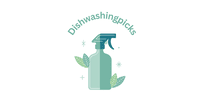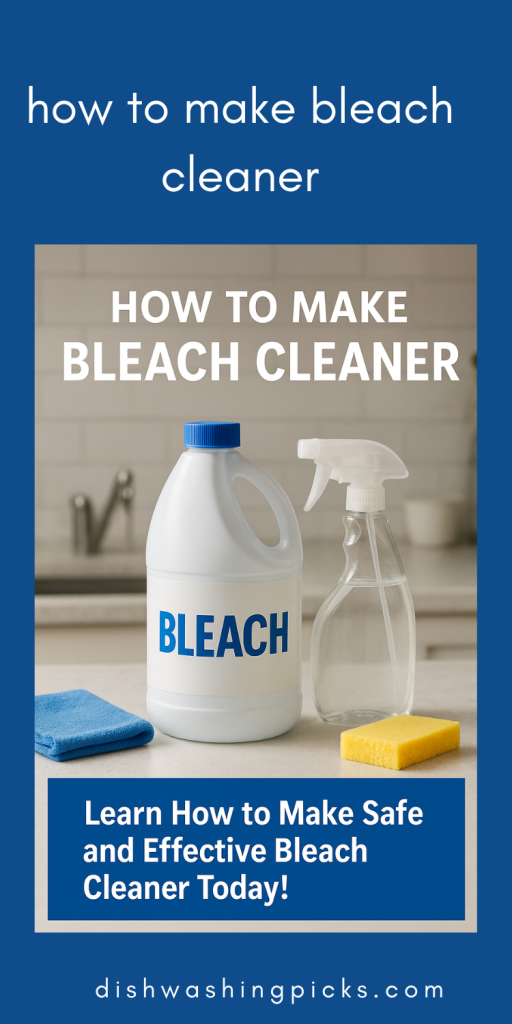Ever stared at a grimy bathroom sink or a kitchen counter and thought, “Ugh, nothing I’ve tried is strong enough!” That’s where bleach comes to the rescue. Yes, the same stuff your grandma probably swore by—it’s cheap, powerful, and incredibly effective at disinfecting and whitening surfaces.
Now, before you flinch at the smell or the thought of harsh chemicals, hear me out. When used correctly, bleach is safe, versatile, and actually quite easy to mix into homemade cleaning solutions. You don’t need to be a chemist—just the right ratios and a bit of caution.
In this guide, we’ll cover:
- How to mix bleach safely for different cleaning tasks
- DIY recipes for bathrooms, kitchens, and all-purpose cleaning
- How to combine bleach with other ingredients like dish soap or lemon
- Tips for disinfecting, scrubbing, and keeping your home sparkling
Imagine this: a cleaner so powerful it kills germs on contact, removes stains, and leaves your home smelling fresh—without the need for expensive commercial products. Sounds good, right?
Let’s start by looking at the bleach cleaning spray ratio, the foundation for all safe and effective homemade bleach solutions.
Bleach Cleaning Spray Ratio: Mix It Right for Maximum Effect
Bleach is powerful stuff—but here’s the catch: too little and it won’t disinfect properly, too much and it can damage surfaces or irritate your skin. So getting the ratio right is key.
General All-Purpose Bleach Spray
- 1 tablespoon of bleach per 1 quart (4 cups) of water
- This works for counters, sinks, and most washable surfaces.
Stronger Disinfecting Spray
- 1/4 cup bleach per 1 gallon of water
- Ideal for bathrooms, toilets, and areas with heavy germs.
Pro tip: Always mix bleach with cool water, never hot. Hot water can reduce its effectiveness. And never mix bleach with ammonia or vinegar—it creates toxic fumes. Safety first!
Once you’ve got the ratios down, the next fun part is creating homemade bleach cleaners for specific purposes, like bathrooms or even combining it with dish soap for extra scrubbing power.
Homemade Bleach Cleaner for Bathrooms: Tough on Grime
Bathrooms are breeding grounds for germs, mold, and soap scum. Lucky for you, bleach is basically a superhero in liquid form when it comes to tackling these messes.
Simple Bathroom Bleach Cleaner Recipe:
- 1/4 cup bleach
- 1 gallon of cool water
- Optional: a few drops of mild dish soap for extra scrubbing power
How to use:
- Mix the solution in a spray bottle or bucket.
- Spray or apply to sinks, tubs, toilets, and tiles.
- Let it sit for 5–10 minutes to kill germs and loosen grime.
- Scrub lightly and rinse thoroughly with clean water.
Pro tip: Ventilate the area while cleaning—open a window or turn on a fan. This not only helps with fumes but also keeps you safe.
Bleach works wonders on tough stains, but sometimes you want a fresh scent while still keeping its disinfecting power. That’s where lemon comes in.
Homemade Bleach Cleaner with Lemon: Fresh and Powerful
Sometimes bleach alone can feel…well, a bit harsh. But add lemon, and suddenly your bathroom smells clean, fresh, and a little zesty. Plus, lemon juice can give surfaces an extra boost in removing stains and mineral deposits.
Lemon-Bleed Bathroom Cleaner Recipe:
- 1/4 cup bleach
- 1 gallon cool water
- 2–3 tablespoons fresh lemon juice
- Optional: a few drops of essential oil for extra scent
How to use:
- Mix carefully in a well-ventilated area.
- Spray onto tiles, sinks, or tubs.
- Let it sit for 5–10 minutes.
- Scrub lightly and rinse thoroughly.
Pro tip: Lemon makes the cleaner smell nicer, but don’t overdo it—too much acid can reduce bleach’s disinfecting power. Think of it as a balance between “smells good” and “kills germs effectively.”
Once you’ve got scented cleaning down, you might want to combine bleach with dish soap for tackling sticky grime in kitchens or tubs.
Homemade Cleaner with Bleach and Dish Soap: Extra Scrubbing Power
Adding a little dish soap to your bleach solution gives it extra grease-fighting and scrubbing power—perfect for kitchen sinks, tubs, or areas with stubborn grime. But a quick warning: never mix bleach with strong detergents that contain ammonia, or you’ll create toxic fumes. Safety first!
Bleach + Dish Soap Cleaner Recipe:
- 1/4 cup bleach
- 1 gallon cool water
- 1–2 teaspoons mild dish soap
How to use:
- Mix gently to avoid excessive foaming.
- Apply to sinks, countertops, or tubs.
- Let it sit 5–10 minutes for disinfecting and grime loosening.
- Scrub lightly and rinse thoroughly with clean water.
Pro tip: Use a soft sponge or cloth—scrubbing too hard can damage certain surfaces, especially delicate tiles or painted areas.
Once you master this, you’ll have a flexible arsenal: plain bleach solutions for disinfecting, lemon for freshness, and bleach + dish soap for tough grime. But for general disinfecting sprays around the house, knowing the right ratio is key.
Bleach Disinfectant Spray Ratio: Keep It Safe and Effective
When it comes to killing germs and keeping your home safe, the right bleach-to-water ratio is everything. Too weak, and it won’t disinfect properly. Too strong, and you risk damaging surfaces or irritating your skin.
Everyday Disinfecting Spray:
- 1 tablespoon bleach per 1 quart (4 cups) of cool water
- Ideal for countertops, tables, and other commonly touched surfaces.
Heavy-Duty Disinfection:
- 1/4 cup bleach per 1 gallon of cool water
- Best for bathrooms, toilets, or areas with high germs.
Safety tips:
- Always mix bleach with cool water. Hot water can reduce effectiveness.
- Never mix bleach with ammonia, vinegar, or other chemicals.
- Use gloves and ensure proper ventilation when spraying.
Pro tip: Label your spray bottles clearly so everyone in the house knows it’s a disinfectant. This keeps everyone safe and prevents accidental misuse.
Once you’ve got the right ratios down, you can even make a DIY Clorox-style cleaner at home for more convenience and storage.
DIY Clorox Cleaner with Bleach: Ready-to-Use Convenience
Sometimes, you just want a spray bottle ready to go—no mixing every time. A DIY Clorox-style cleaner gives you disinfecting power on demand, perfect for quick cleaning sessions.
DIY Clorox-Style Cleaner Recipe:
- 1/2 cup bleach
- 1 quart (4 cups) cool water
- Optional: a few drops of mild dish soap for extra cleaning power
How to use:
- Mix gently in a spray bottle.
- Spray on countertops, sinks, toilets, or bathroom tiles.
- Let sit for 5–10 minutes, then wipe clean.
Storage Tips:
- Store in a cool, dark place—bleach degrades in sunlight.
- Label the bottle clearly as “Bleach Cleaner.”
- Use within a few weeks for maximum effectiveness; bleach loses potency over time.
This DIY solution gives you all the disinfecting power of commercial cleaners, but cheaper, customizable, and eco-friendlier.
How to Make Bleach with Sodium Hypochlorite: The Basics
If you’ve ever wondered what’s actually in your bleach bottle, it’s usually sodium hypochlorite dissolved in water. It’s the active ingredient that gives bleach its disinfecting power. While you can technically make bleach from concentrated sodium hypochlorite, it’s important to handle it carefully—this is strong chemistry, not a casual kitchen experiment.
Safe Approach:
- Most DIY “bleach makers” use pre-diluted sodium hypochlorite solutions, mixing it with water to achieve a safe concentration (around 5–6% for household use).
- Avoid concentrated solutions unless you’re trained; they can burn skin, eyes, and release toxic fumes.
Basic Mixing Guideline for Household Use:
- 1 part 5% sodium hypochlorite solution + 9 parts water ≈ standard household bleach concentration.
- This solution can then be used in all the recipes we’ve covered earlier: disinfecting sprays, bathroom cleaners, and Clorox-style bottles.
Pro tip: Always label your solution, store it in a cool, dark place, and never mix with other chemicals. Treat it with the same caution as any commercial bleach product.
With this knowledge, you now understand what makes bleach powerful, how to mix it safely, and how to use it effectively for cleaning and disinfecting.
FAQs
How Do You Make Homemade Bleach Cleaner?
You can make a simple bleach cleaner by mixing bleach with water. A common ratio is 1 part bleach to 10 parts water for general household cleaning. Always wear gloves and work in a well-ventilated area.
How Do You Use Bleach as a Household Cleaner?
Bleach can be used to disinfect surfaces, sanitize bathrooms, and remove mold or mildew. Apply the diluted solution, let it sit for a few minutes, then rinse thoroughly with water.
What Are the Components of Bleach Cleaner?
Household bleach cleaner typically contains sodium hypochlorite as the active ingredient, along with water and stabilizers. Commercial bleach products may also include surfactants and fragrances.
What Cannot Be Cleaned with Bleach?
Avoid using bleach on wood, aluminum, copper, painted surfaces, and fabrics that are not bleach-safe, as it can cause discoloration or corrosion.
Conclusion: Mastering Homemade Bleach Cleaners
And there you have it—a complete guide to using bleach safely and effectively around your home. From simple spray ratios to DIY Clorox-style cleaners, lemon-scented mixes, and even bleach with dish soap for tough grime, you now have all the tools to tackle germs, stains, and sticky messes like a pro.
Here’s a quick recap:
- Bleach cleaning spray ratios matter: use 1 tablespoon per quart of water for everyday use, or 1/4 cup per gallon for heavy-duty disinfecting.
- Bathrooms: bleach + water (optionally lemon or dish soap) is perfect for sinks, tubs, tiles, and toilets.
- Kitchens and tough grime: add mild dish soap to boost scrubbing power without reducing disinfecting ability.
- DIY Clorox-style cleaner: convenient, ready-to-use sprays are safe when stored properly.
- Understanding bleach chemistry: sodium hypochlorite is the active ingredient—dilute properly and always handle with care.
Imagine this: sparkling surfaces, germ-free counters, and a home that smells clean (without overpowering chemical odors). With the right ratios, solutions, and safety precautions, bleach becomes your ultimate cleaning sidekick—cheap, effective, and powerful.

